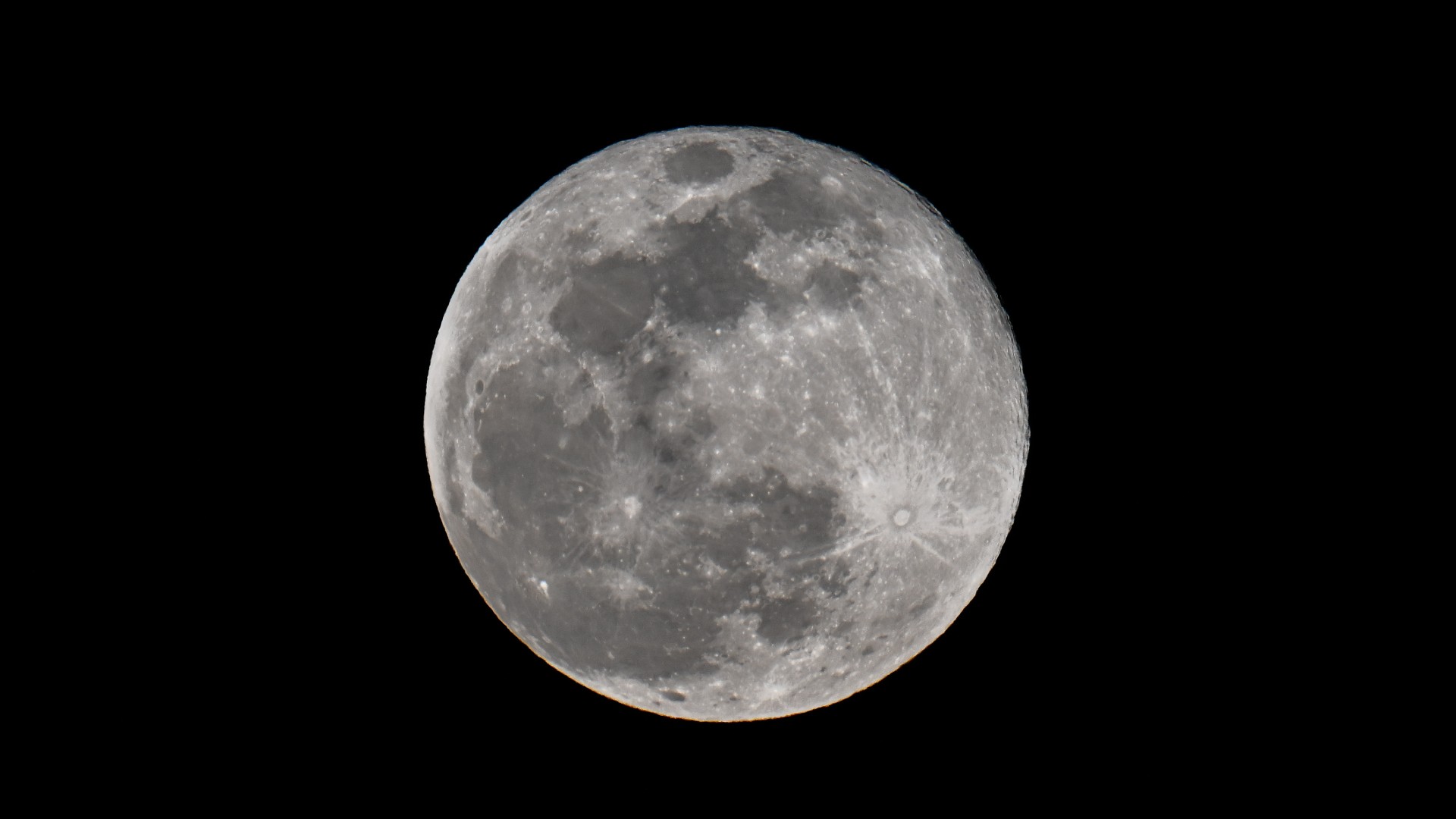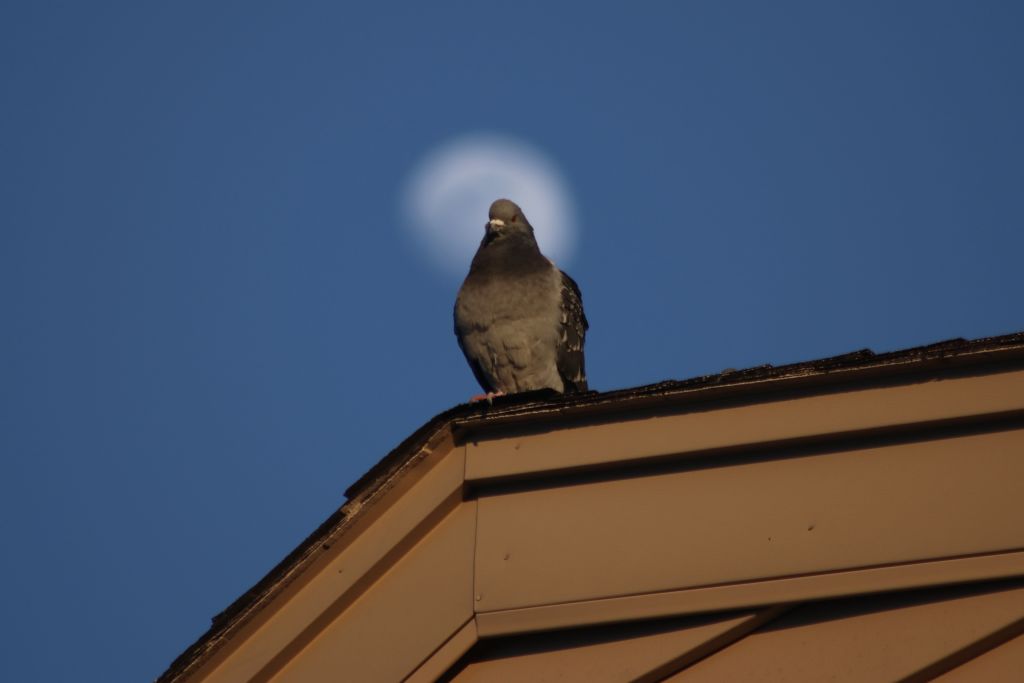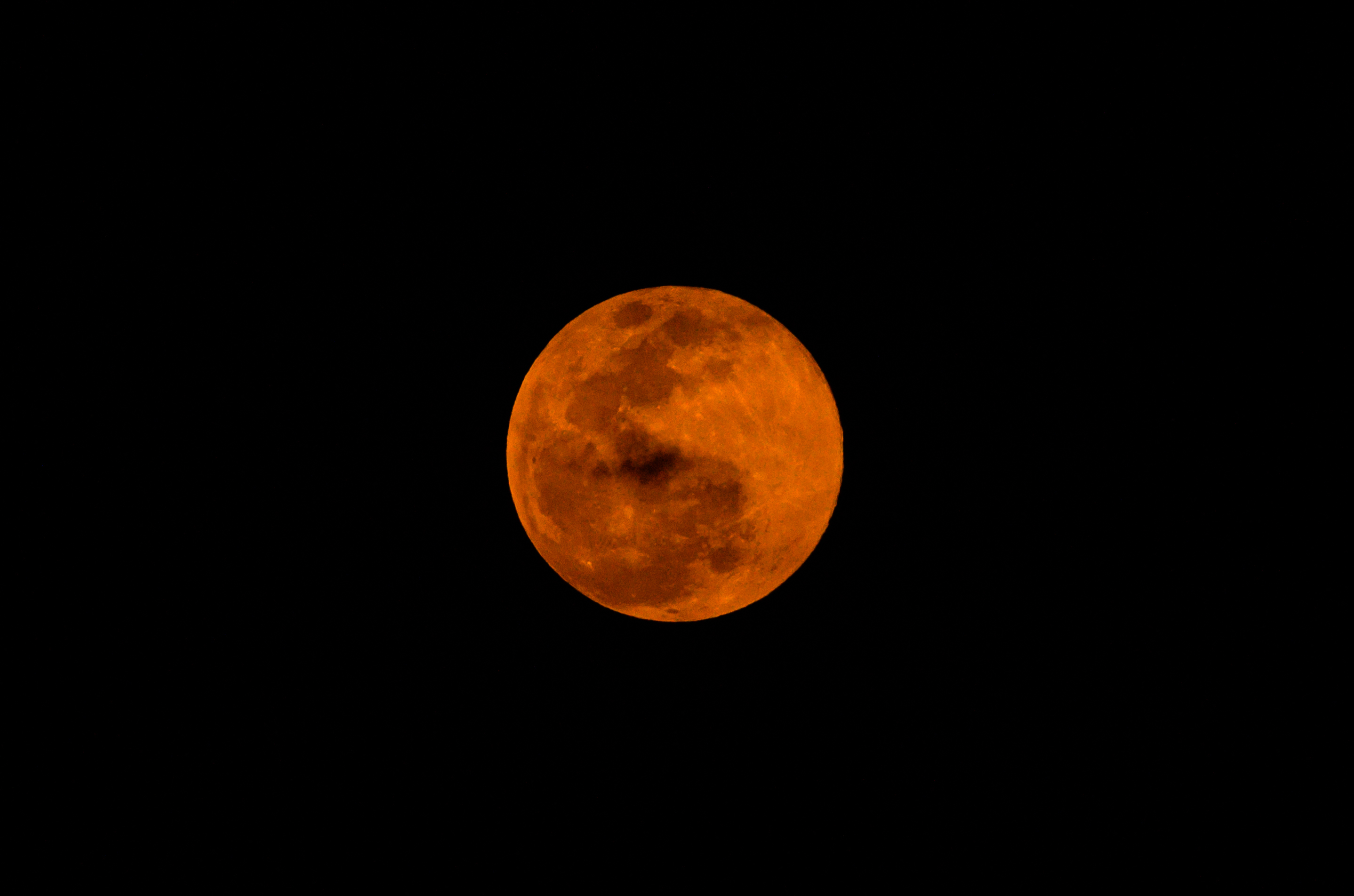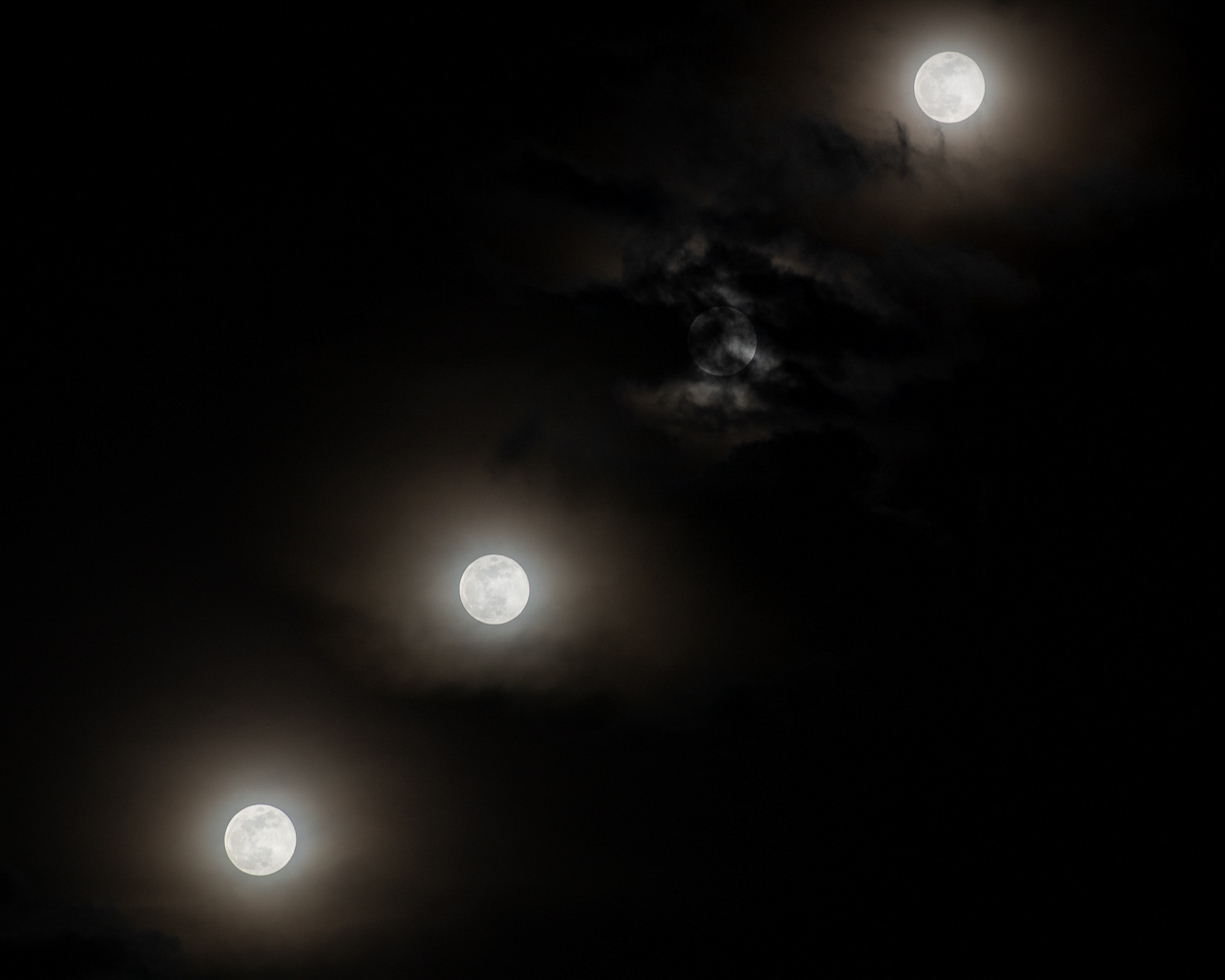See February's Full Snow Moon light up the night sky around the world (photos)
The smallest full moon of 2024 had a big impact on moon-lovers, skywatchers and astrophotographers.

February's full moon, the Snow Moon, rose over Earth on Saturday, Feb. 24, with skywatchers braving the frosty weather to catch stunning images of the second full moon of 2024.
The Snow Moon is the smallest of 2024, with it appearing around 10% smaller in the night sky due to the fact that the moon's orbit is a flattened circle, or ellipse. This means sometimes the moon is closer to Earth or at perigee (its closest point to Earth in its orbit), and sometimes, such as on Saturday, it is further away or at apogee (the farthest point from Earth in its orbit).
Astrophotographers didn't let the slightly more diminutive status of the Snow Full Moon deter them from catching some images that have a big impact.
Related: Full moon calendar 2024: When to see the next full moon
Read more: What is the moon phase today? Lunar phases 2024
One photographer caught the Full Snow Moon rising behind the Statue of Liberty in New York City on Saturday, snapping February's full 'micromoon' from Jersey City, New Jersey.

The Full Snow Moon was also captured at the peak of the Empire State Building, New York's other most famous landmark, which was lit in the colors of the flag of Ukraine. This image was taken from Hoboken, New Jersey by Gary Hershorn.

On X, user Dan Martland shared timelapse footage of the snow moon rising over midtown Manhattan filmed from 9.5 miles away in Newark, New Jersey.
Get the Space.com Newsletter
Breaking space news, the latest updates on rocket launches, skywatching events and more!
Tonight's Moonrise above midtown Manhattan. #Timelapse #SnowMoon (Shot from over 9.5 miles away in Newark New Jersey) pic.twitter.com/s3qGl4hFMwFebruary 26, 2024
In California, passers-by watched as the Snow Moon rose shrouded in mist and clouds, over Seal Point Park at San Francisco Bay in San Mateo on Saturday.

Snow might not be something usually associated with California, but on Saturday, the Snow Moon was pictured rising over a snow-covered hill in Mammoth Lakes by Mario Tama after recent storms increased the snowpack alleviating fears of a 'snow drought' in the state.

Snow might be an unusual sight for California, but pigeons are definitely commonplace in New Jersey. A bird ignores the nearly full moon as it rises over Secaucus City in New Jersey.

Also on X, the aptly named TheMoonGuy shared stunning images he snapped of the Snow Moon rising over Salford in Manchester.
The views >>>>>> pic.twitter.com/ZG0TxD8hFeFebruary 24, 2024
Also in the U.K., X user Veronica in the Fens caught a less metropolitan view of the Snow Moon as it rose over the beautiful scenery of the Great Ouse River in the Fens, Ely.
The lovely Full Moon “The Snow moon” rising over the river Great Ouse in The Fens, Ely. A little Great Crested Grebe in one of the photos, made me smile 🥰#FullMoon #SnowMoon #TheFens #RiverMoon @ThePhotoHour pic.twitter.com/JwsfPKDQx6February 24, 2024
X user Anas shared an image of the Snow Moon emerging from behind the steel and glass structure of a building in Islamabad, Pakistan, on Saturday evening.
Rising Snow Moon 2024 https://t.co/AnnpwxDVdp pic.twitter.com/xHnMI62D80February 24, 2024
The Snow Moon took on an almost contradictory firey orange glow as seen over West Bengal, India, On Feb. 24, showing the major contrasting visages a single full moon can take on depending on the conditions in the sky it is observed in.

The Snow Moon was seen with an almost ephemeral glow from L'Aquila, Italy, on Saturday in this time-lapse image that tracks its progress through the night sky.


Looking for a telescope to see the moon? We recommend the Celestron Astro Fi 102 as the top pick in our best beginner's telescope guide.
If these incredible Snow Moon images have got you warmed up to the idea of capturing the next fully illuminated lunar face for yourself, you won't have to wait too long. The next full moon, the third of 2024, is the Worm Moon, which rises on March 25.
If you'd like to take a look at the next full moon up close, our guides to the best telescopes and best binoculars are a great place to start.
And whether you want to take your own photos of the moon or to explore photographing the night sky in general, check out our guide on how to photograph the moon, as well as our recommendations for the best cameras for astrophotography and best lenses for astrophotography.
Join our Space Forums to keep talking space on the latest missions, night sky and more! And if you have a news tip, correction or comment, let us know at: community@space.com.

Robert Lea is a science journalist in the U.K. whose articles have been published in Physics World, New Scientist, Astronomy Magazine, All About Space, Newsweek and ZME Science. He also writes about science communication for Elsevier and the European Journal of Physics. Rob holds a bachelor of science degree in physics and astronomy from the U.K.’s Open University. Follow him on Twitter @sciencef1rst.









